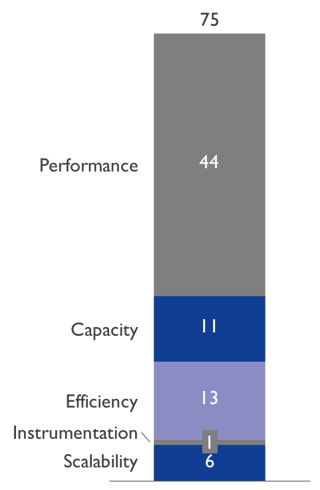Summary
- We recently delivered a project to independently performance assure the migration of 138 applications to new DC, this included some upgrades to OS and software versions
- The key to delivering this was by using a risk based approach to ensure that the appropriate mitigations were delivered during the initial phase of the programme.
- This risk-based approach narrowed the scope of detailed mitigations from 138 to 13 applications
Background
We worked with a global retail company to migrate 138 applications, these were SAP and ecommerce platforms that generate significant revenue. The programme was planned to deliver significant benefits by providing a platform for future growth, innovation, and business agility.
The programme was planned to deliver a long term cost benefit of £10m from a budget of £1.5m
The plan for the migration had started as ‘lift and shift’, but had changed more fundamentally as the business benefits were realised:
- New infrastructure
- Zoned networks
- Server hardware
- SAN storage
- Firewalls
- Upgraded OS
- Re-architected integration platforms
- Upgraded DB versions
- Upgraded App versions
- New Java frameworks
The architecture of the ecommerce application was complex with mutiple dependencies with integration platforms and SAP.
Increases in response, or decreases still stability, would have significant consequences for ecommerce order conversion rate, particularly at peak times when the site was subjected to most load. Substantial outages would damage the reputation of this global business. The changes planned were highly complex and required careful handling.
Challenge
There were aggressive time constraints imposed on the delivery phase of the migration programme, it was not possible to assure the performance for all 138 applications and subordinate systems. It was necessary to take an objective view of key capacity and performance risks to focus mitigation efforts on high and critical risks that would compromise the ability to support peak periods.
Using this approach we worked to narrow scope from 138 to 13 applications, identifying 83 performance defects, 75 of which resolved prior to go-live in the subsequent performance testing phase. These risks we classified based on the 7 pillars of performance;

Outcome
Using a pragmatic approach to identifying performance risk the following benefits were delivered to the programme:
- No P1 performance incidents were experienced
- Significant response and scalability improvements were achieved on the main ecommerce web site
- The migration programme was delivered on time
- Using this approach fixed 75 performance defects, and as a result the programme delivered on time, with a 27% improvement to performance for key application


